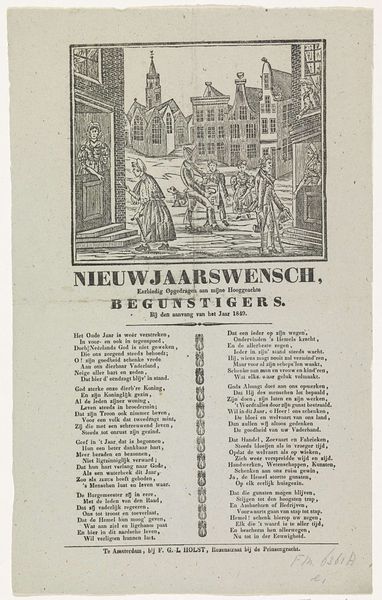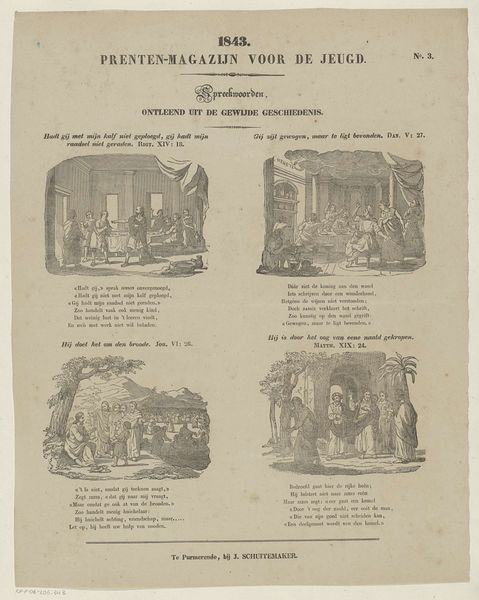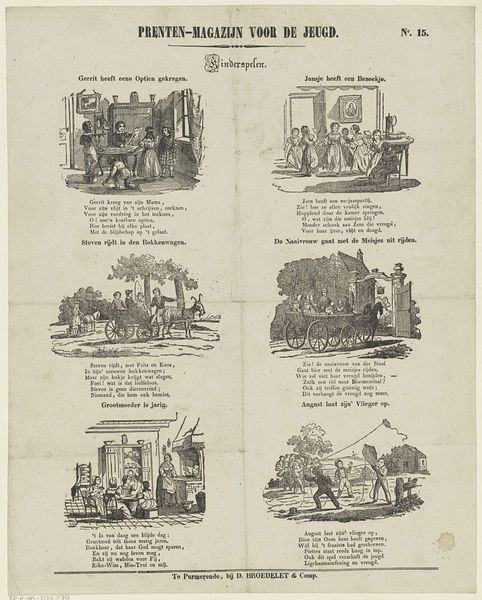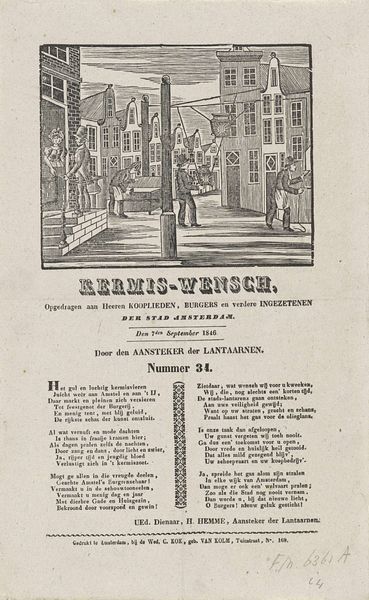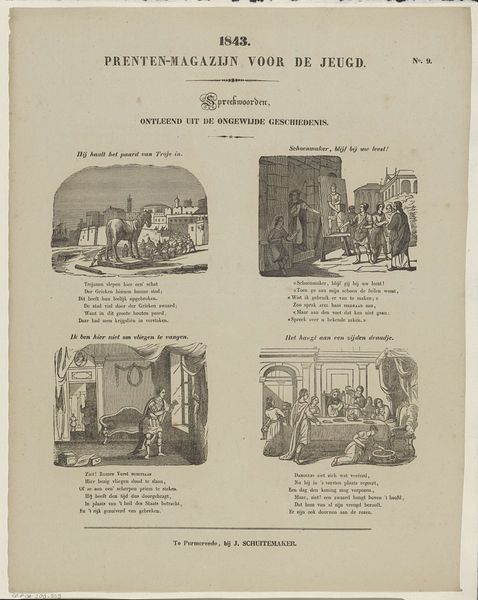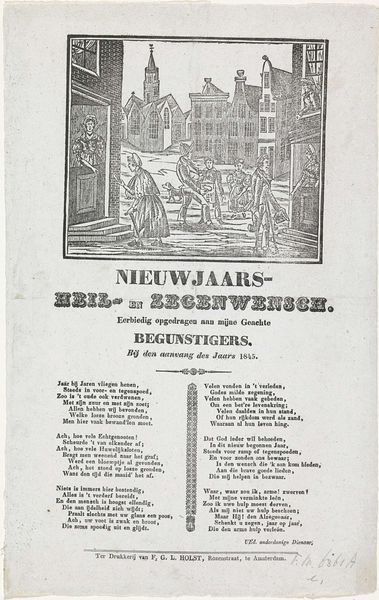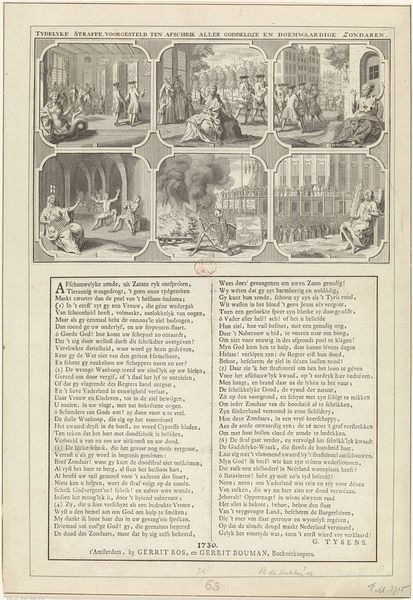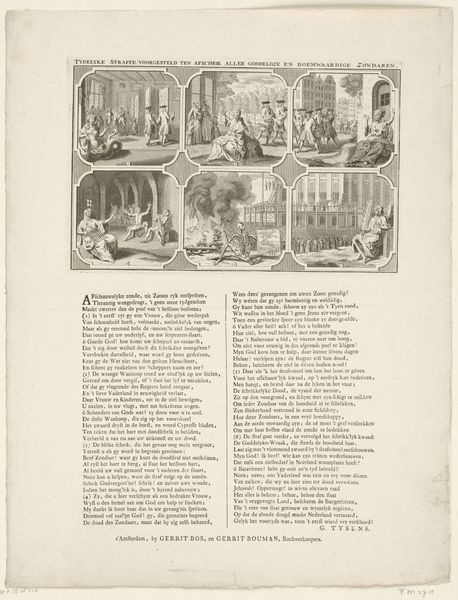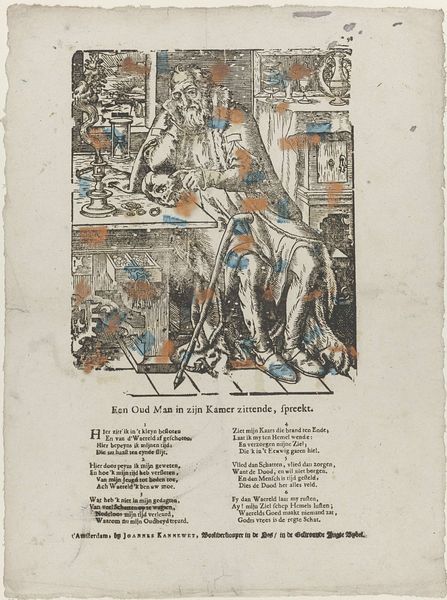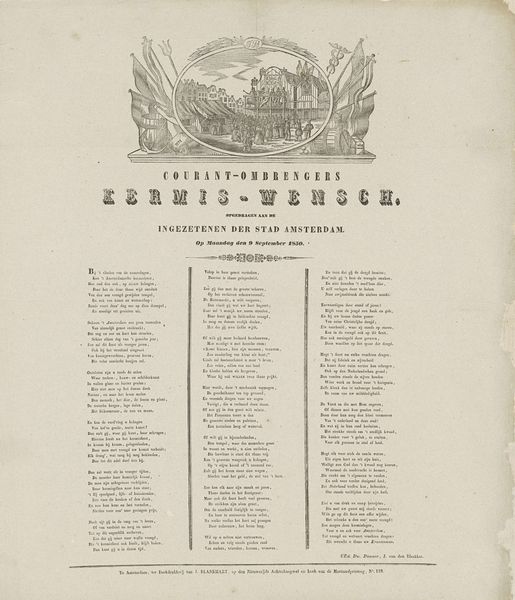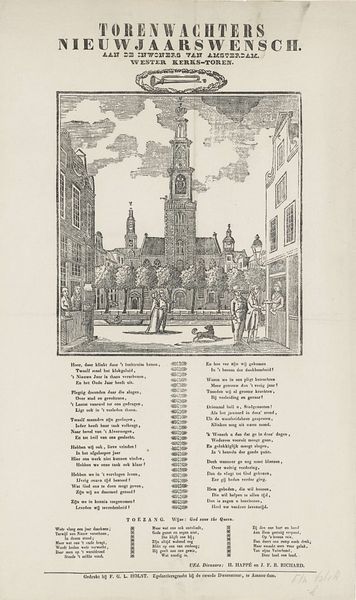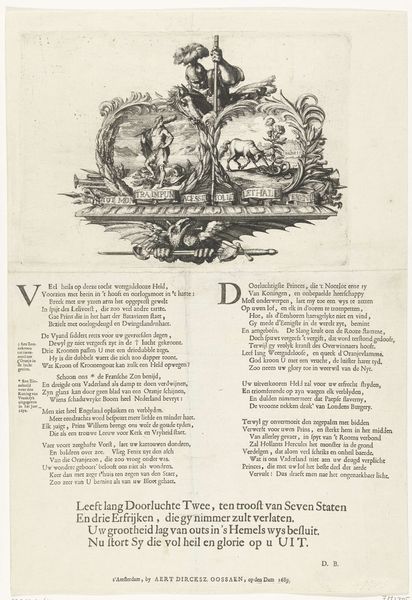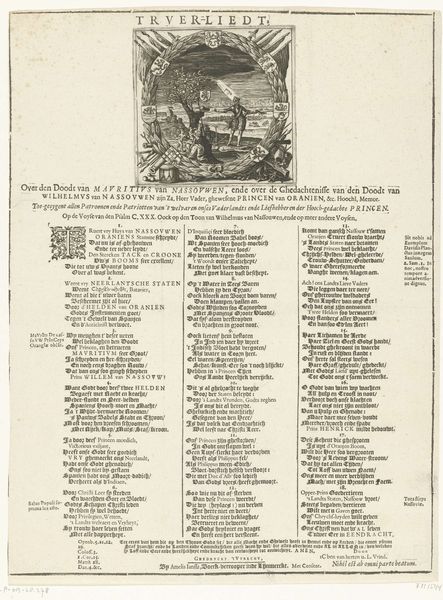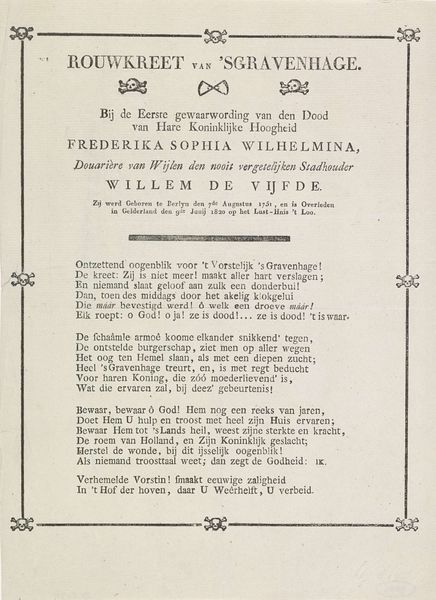
Nieuwjaarswens van de Amsterdamse porders voor het jaar 1850 1849 - 1850
0:00
0:00
print, paper, engraving
#
dutch-golden-age
# print
#
paper
#
romanticism
#
cityscape
#
genre-painting
#
engraving
Dimensions: height 343 mm, width 218 mm
Copyright: Rijks Museum: Open Domain
Curator: Here we have "Nieuwjaarswens van de Amsterdamse porders voor het jaar 1850," or "New Year's Greeting from the Amsterdam Porders for the Year 1850." It’s an engraving on paper, created anonymously around 1849 or 1850. It's part of the Rijksmuseum's collection. Editor: Immediately, the grayscale and high-contrast tones give this piece a somber quality. It almost feels like a documentary still captured from a stage play. Curator: That's perceptive. These types of prints served as New Year’s greetings, often distributed by tradespeople like the “porders”—individuals who carried baggage. The cityscape imagery reinforces the sense of place and belonging within the Amsterdam community. The poem inscribed beneath delivers the message, albeit heavy with symbolic gravitas. Editor: I’m curious about the rigid, box-like structure and arrangement of the print, juxtaposing image, text, and even ornamentation. It’s less concerned with an artistic, sweeping gesture, and more interested in fitting the components inside the parameters and boundaries set in place by the edge. Curator: True, but look closer. The architectural rendering, the depiction of daily life… they evoke a feeling for the urban environment. Remember, during this period, Romanticism and Dutch Golden Age sensibilities blended. You see it particularly in the way ordinary citizens are given significance. The imagery echoes collective memories and aspirations. Each element reflects deeply ingrained societal values. Editor: The engraving technique reinforces that linear perspective. The hatching and cross-hatching meticulously render depth, but simultaneously keep us at a slight remove, solidifying an arm's-length viewing experience, rather than total immersion. Curator: And consider the poem's themes: mortality, community, divine blessing… It uses symbolic language common at the time, drawing on shared cultural and religious frameworks to amplify its message of hope amidst life’s uncertainties. New Year's was a hinge point of spiritual evaluation. Editor: In a way, it reminds us that images can exist beyond just aesthetic enjoyment; here is visual communication operating to connect communities and promote continuity. I can see that reflected within the physical and visual order presented in the print itself. Curator: Absolutely. Its form, content, and intention weave together to construct a potent cultural artifact that says, ‘We endure.’
Comments
No comments
Be the first to comment and join the conversation on the ultimate creative platform.
